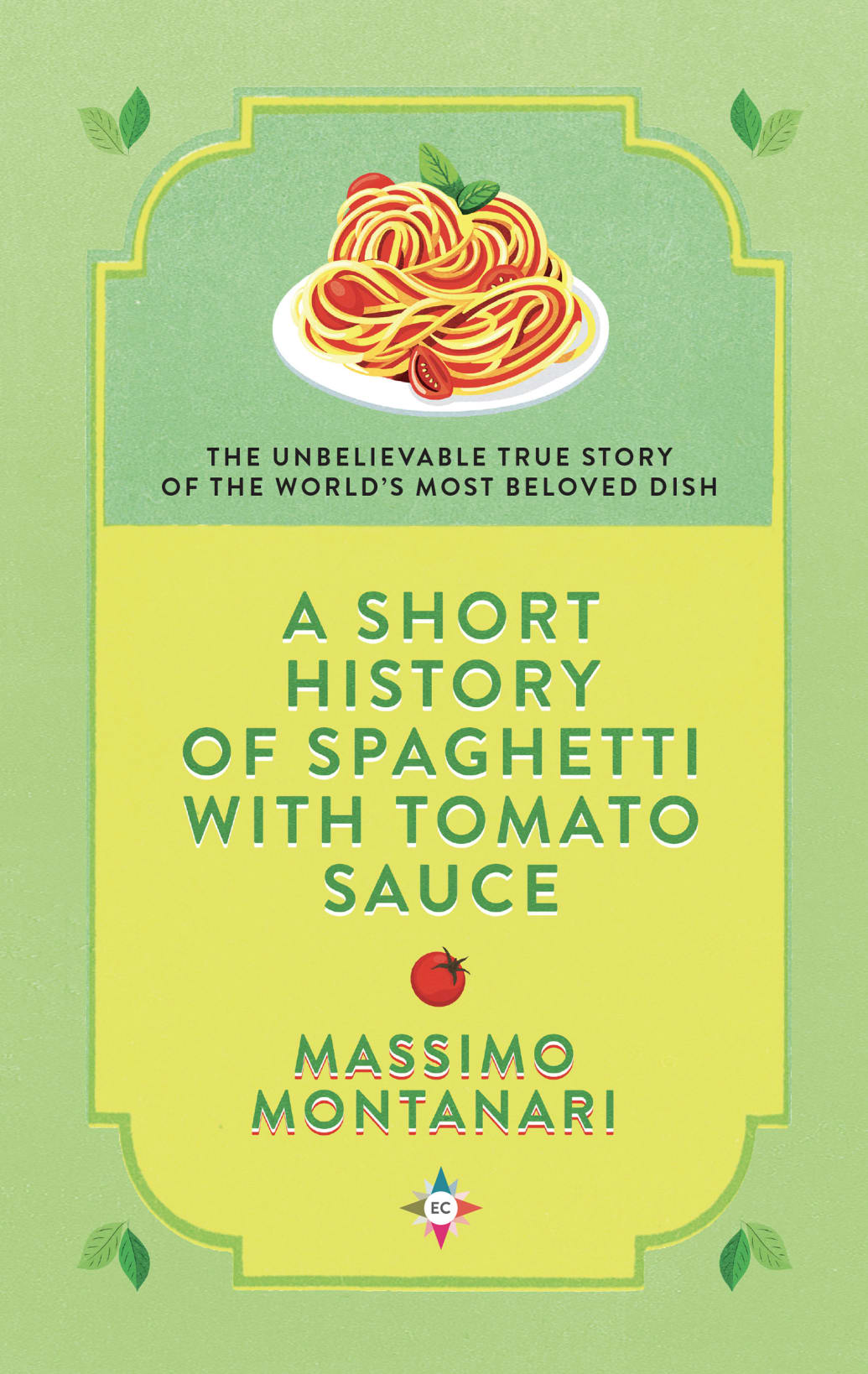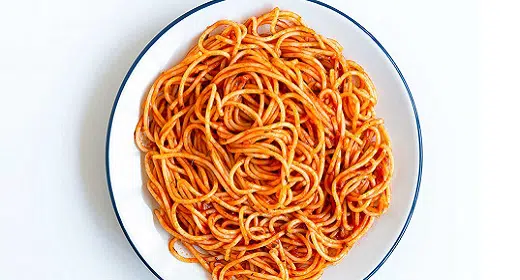by Lewis Beale: We talked to author and Italian food scholar Massimo Montanari about his new book, “A Short History of Spaghetti with Tomato Sauce,” and the real history of this staple…
Who first introduced spaghetti to Italy? Well, you often hear that it was Marco Polo who introduced pasta to Italy after his return from China. And it was discovered by one of his sailors, a Venetian whose name was, appropriately enough, Spaghetti.
The only problem with this memorable story is that none of it is actually true.
That’s only a taste of the fascinating bits of information, both accurate and false, contained in Massimo Montanari’s A Short History of Spaghetti with Tomato Sauce, which will be published later this month. The book is just the right length (128 pages), academic, and an utterly fascinating discourse on food history. It explains how pasta became so incredibly popular and how, over the years, it was paired with parmesan cheese, tomato sauce, basil, and olive oil, to form the dish so many of us regularly enjoy today.

Massimo Montanari
Calling his book a “historical reconstruction” of the dish, Montanari goes on to note that “spaghetti with tomato sauce, especially if topped with grated parmesan cheese, is the symbol of [Italian] identity par excellence.”
Starting from that premise, Montanari, who is a professor of food history at the University of Bologna, delves back hundreds of years in his search for the origins of the various ingredients that still thrill our taste buds. The book is, he says, also a “historical deconstruction” of the dish and delves into its origins, preparations, and uses.
With so much information in such a short volume, we dug deeper into five key facts.
“The practice of drying pasta has been of great importance in the history of nutrition—not only because it has made possible the preservation of pasta in the home, but also because it has multiplied the industrial and commercial potential of this product. The drying of pasta took hold especially in Italy, starting from Sicily, where Arabs introduced the use of dried pasta, a practice they had imported from the East. It is in Sicily that, in the 12th century, the pasta industry first emerged. Since then, Italy has gradually become (and still is) the world’s largest producer of dried pasta. This development has been the product of several factors. Key among these was the initial encounter in Sicily of two different ways of using pasta, one from the East, introduced in the West by Arabs, and one of Greco-Roman origin. The combination of these two traditions sparked the extraordinary development of Italy’s pasta industry.”
“In the Middle Ages, parmesan became Italy’s most important cow’s milk cheese. Until then cheese was made almost exclusively from sheep’s milk, and bovines were essentially used only for labor. Parmesan’s great success was due not only to the fact that it tasted ‘good’ (the same could be said of many other types of cheese) but to the fact that since the beginning it was associated with pasta as its primary condiment. Already in the Middle Ages and still in the 18th century, it was common to associate pasta and cheese, for reasons of taste but also because of the prescriptions of dietary science. To keep in mind this aspect of the history of pasta is important, as it shows that the history of food is not the history of individual products, but of ‘systems’ and ‘associations’ between foods. It would be impossible to understand the history of parmesan without looking at the history of pasta, which developed parallel to it.”
“During the Middle Ages and the Renaissance pasta acquired an increasingly important role in Italian cuisine. However, at the time pasta hadn’t yet become the distinctive dish of Italy’s gastronomic culture, associated with its national identity. It was consumed by the aristocracy but only to accompany meat as a ‘side dish.’ Things started to change in the 17th century, first in Naples then elsewhere. On the one hand, the change was the result of the impoverishment of the urban population, for whom procuring food became more difficult. On the other, the invention of machines such as the mixer (or mechanical dough-kneader) and the pasta extruder made it possible to produce pasta more quickly and at lower cost, reducing its market price. As a result, first in cities and only later in the countryside, pasta became the preeminent dish among the lower classes.”
“For centuries, butter and lard were the condiments of pasta, together with cheese. Butter on the tables of the nobles, lard on those of the common people. Olive oil was extremely rare and costly, and used only on vegetables or fish, not on pasta; it was considered a ‘low fat’ food that could be consumed on the days when the Church calendar prohibited the use of animal products. Starting in the 19th century, and especially during the second half of the 20th century, the production of olive oil increased significantly, allowing for its wider consumption. In addition, in recent decades nutrition science has emphasized more and more the benefits of substituting animal fats with vegetable oils. The combination of economic and health factors has gradually changed people’s taste, to the point that today it is considered ‘normal’ to dress pasta with olive oil.”
“Basil was almost completely absent from Medieval and Renaissance cuisine. The use of basil became more widespread in the 19th century because its flavor and smell were a perfect match for tomato sauce, which was introduced in Italian cuisine in the 18th century and, from the 19th century onwards, started to be used on pasta. The traditional condiments of pasta (cheese, butter, lard) weren’t a good ‘match’ for basil, irrespective of the prejudice people may have had about this plant. I think that taste decided the success of basil: it goes perfectly with tomato, so much to overcome any prejudice. In the end, taste always wins.”
Source: The Daily Beast





















































